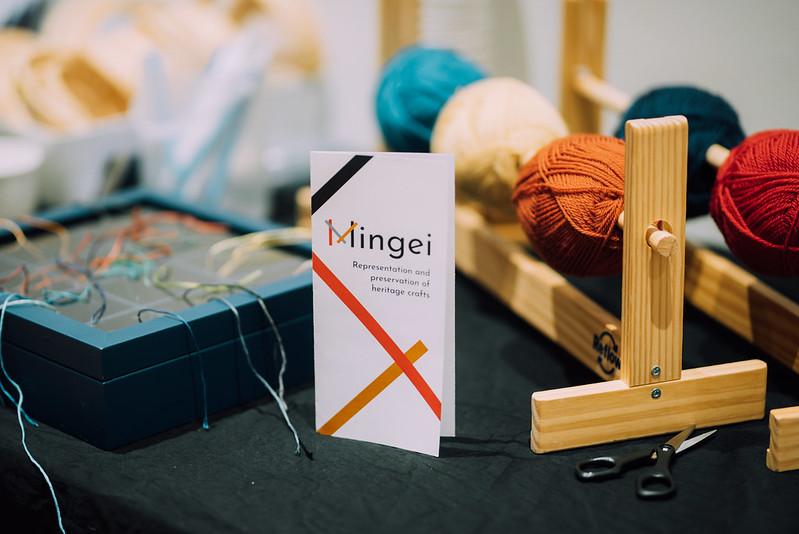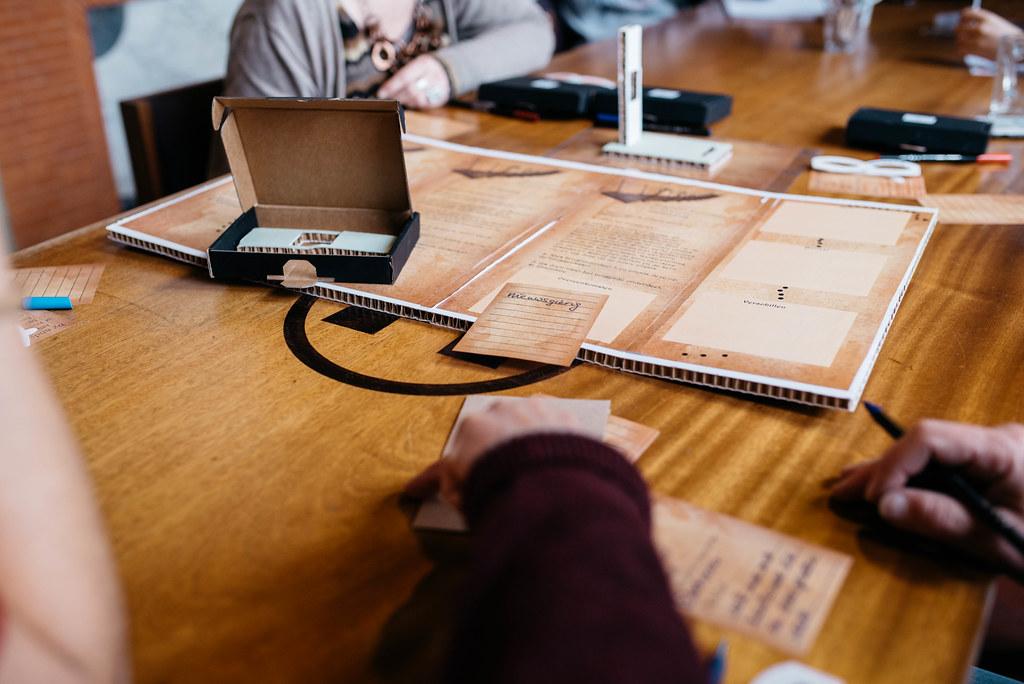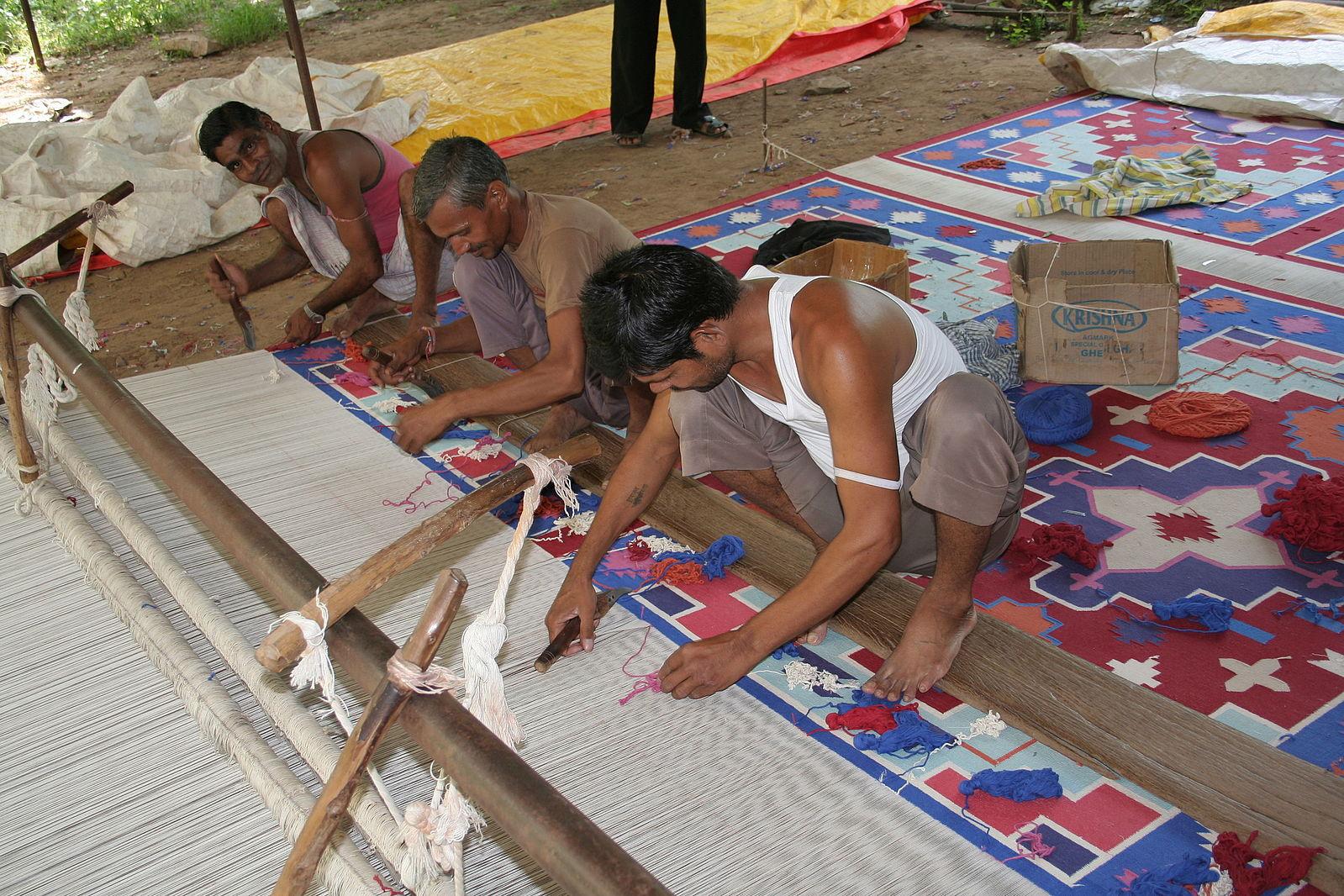Waag is a partner in the European project Mingei, that aims to digitise, preserve, and make visible the tangible and intangible aspects of traditional craftsmanship. On March 10, Waag collaborated with several partners to host events in honour of what we have started calling Mingei Day. It included an international webinar, a workshop and a keynote from fashion designer Antoine Peters.
Mingei Day was an event in which the results and knowledge of the Mingei project were shared with the broader public. Through the work of this project on crafts, connections between the past and present are forged and explored, often presenting insights that can be applied to the present day and to the future.
Technology as a means of preservation
Online, four heritage experts along with moderator Nicole McNeilly conducted an international webinar focused on how technology can be utilised to preserve heritage crafts. During the presentation, the audience learned more about the three Mingei pilot projects, on glassblowing, silk weaving, and mastic growing, which will create tools for heritage craft presentation and guide future research.

The Mingei project platform and different technologies like 3D reconstructions, used to preserve and represent heritage craft, were also demonstrated. Following the presentation was a panel on various topics like the inclusion of AI in craft preservation, how the Mingei project can serve to pass on informal heritage craft knowledge to a broad audience, and how this knowledge of the past can serve to inform our future.
Fashion as a thread between past and present
At Waag, creative Director Dick van Dijk provided an overview of the Mingei project and introduced the attendees to keynote speaker and renowned fashion designer Antoine Peters’ work, saying that it ‘looks into the past and provides new context’ for the future. During the keynote, Peters discussed several of his projects including his collaboration with the Zeeuws Museum. For the museum, he reimagined a traditional nineteenth-century garment from Zeeland, the yak, as a modern garment: the Jaktrui. In creating the Jaktrui, Peters ‘wanted to communicate something from the past to the now and translate it in my own way’. The zero-waste folding technique was then used for economic reasons, but now is very relevant from a sustainability perspective.

Following his presentation was a workshop on the craft of repairing clothing. This workshop was designed based on the Reflow project aiming to share knowledge on how to rethink, repair, and revalue your wardrobe. During this workshop, attendees were encouraged to rethink items of their own clothing focusing on both aesthetic and technique in clothing repair.
- Rewatch the workshop
- Watch the instruction
- View the photos of the workshop (photo credit: Jimena Gauna)
- An impression of the local sessions from the European partners will be published on the Mingei website.

How heritage can shape the future
So how does the Mingei project serve to connect the past, present, and future? Inspired by the Mingei movement in Japan, which originally served as a response to Western mechanisation in the mid 1920s, the Mingei project today focuses on the digitalisation and accessibility of heritage craft, both tangible and intangible.
Through use of modern technologies like interactive Augmented Reality and Mixed Reality, Mingei seeks to tell stories not only about the craft objects themselves, but about the rituals, practice, and knowledge that accompany these objects. The application of modern technology to heritage craft can then serve to build a bridge between the past and present.

In regard to the connection between past and present, Antoine Peters notes that ‘a design or a translation now always has this reference captured in it. So you have these little bridges - in storytelling or in the visual part’. When Peters was researching the yak, he found that no documentation existed detailing its construction proces - namely, how to take one piece of fabric and fold it to create the jak. Instead, he learned the folding technique from 91-year-old craftswoman Mrs. Vos.

This mirrors a challenge that was discovered during the Mingei project: during a glassblowing pilot in Paris, there was no documentation that outlined the movements and rituals of past glassblowers. Similar to the work Peters did to understand the historical process of crafting the yak, those working on the glass pilot had to find alternate methods to learn craft heritage techniques and movements and were able to reverse-engineer steps required for glassblowing. Both Peters and the glass pilot help to further an understanding of the past while contributing valuable knowledge to the future.
Through work like the Mingei project and Peters' collaboration with the Zeeuws Museum, modern concepts and technologies can be applied to the past in a way that creates bridges between the past and present. When talking about heritage, Peters noted that the past and present cannot be separated; that ‘it’s all connected’. Examining these connections allows us to see the thread that connects the present day with the past and tells us stories that can be leveraged to imagine the future.



